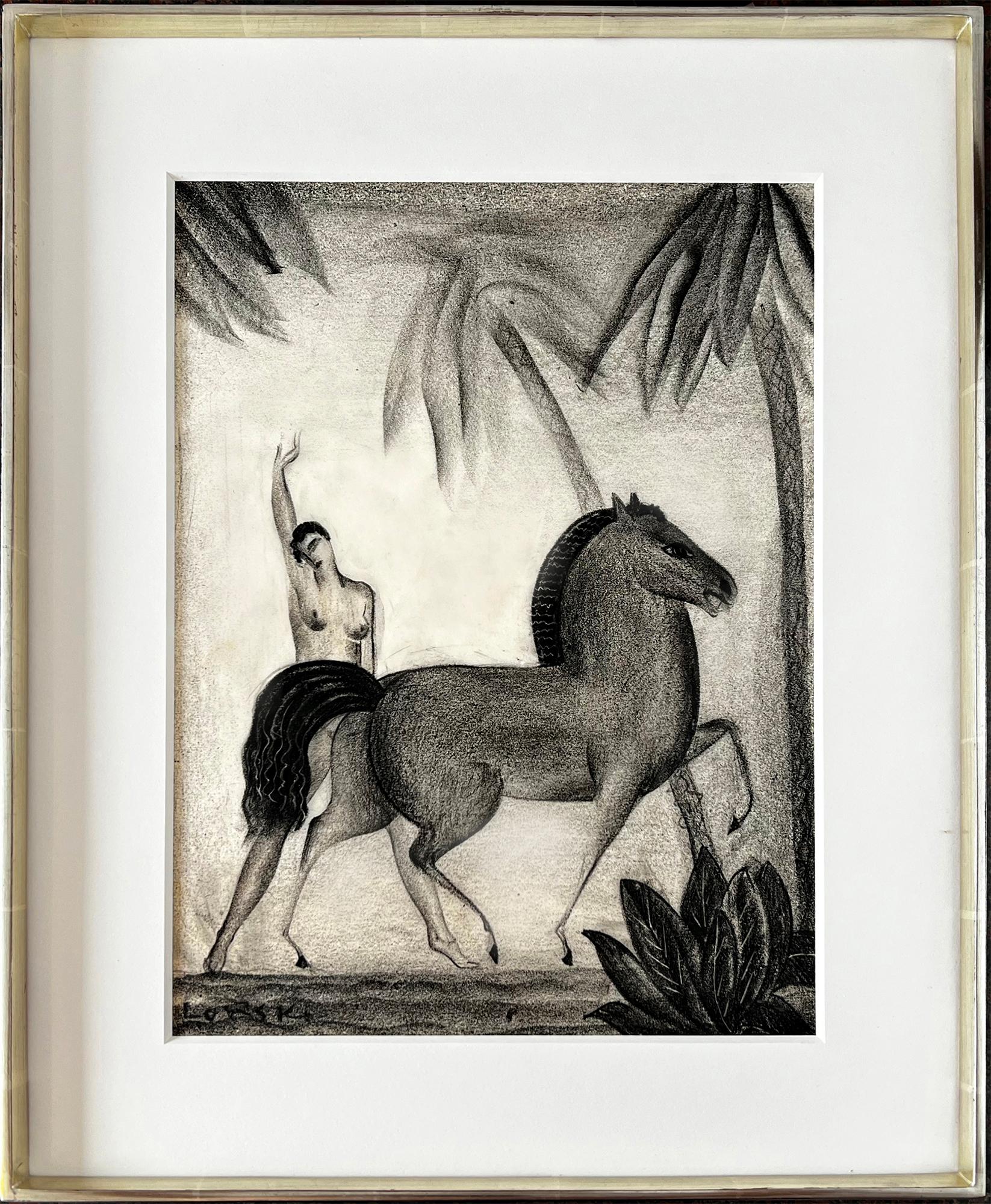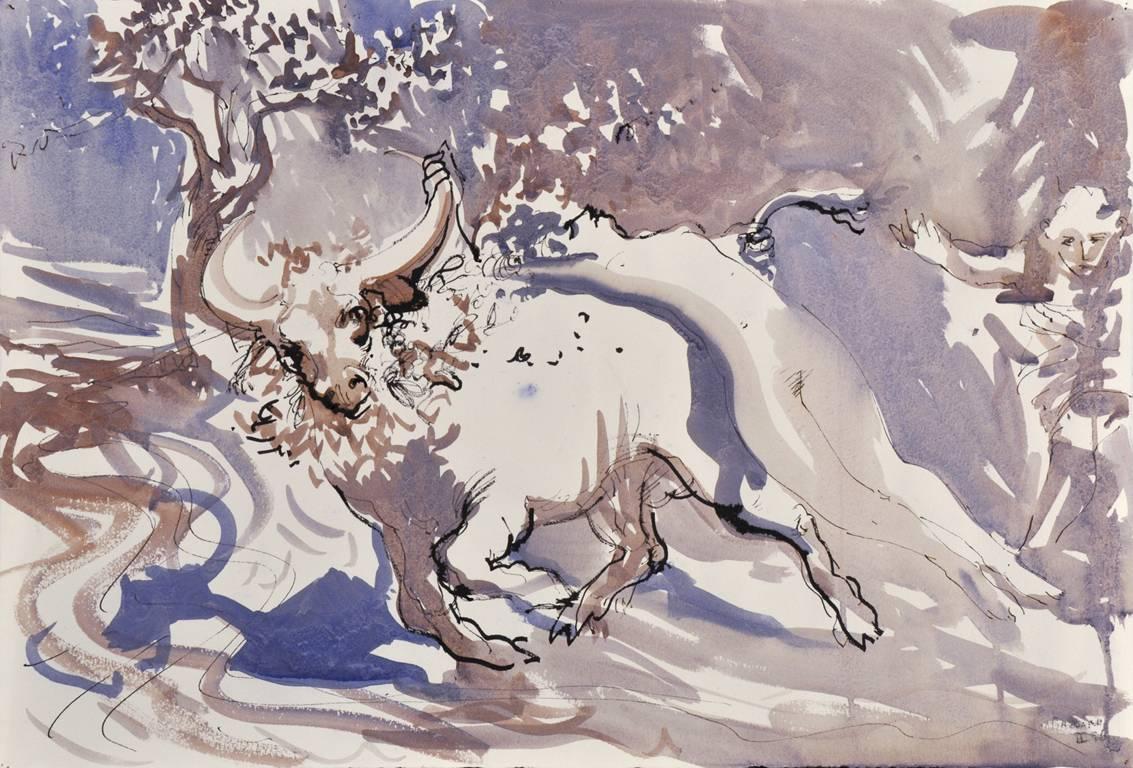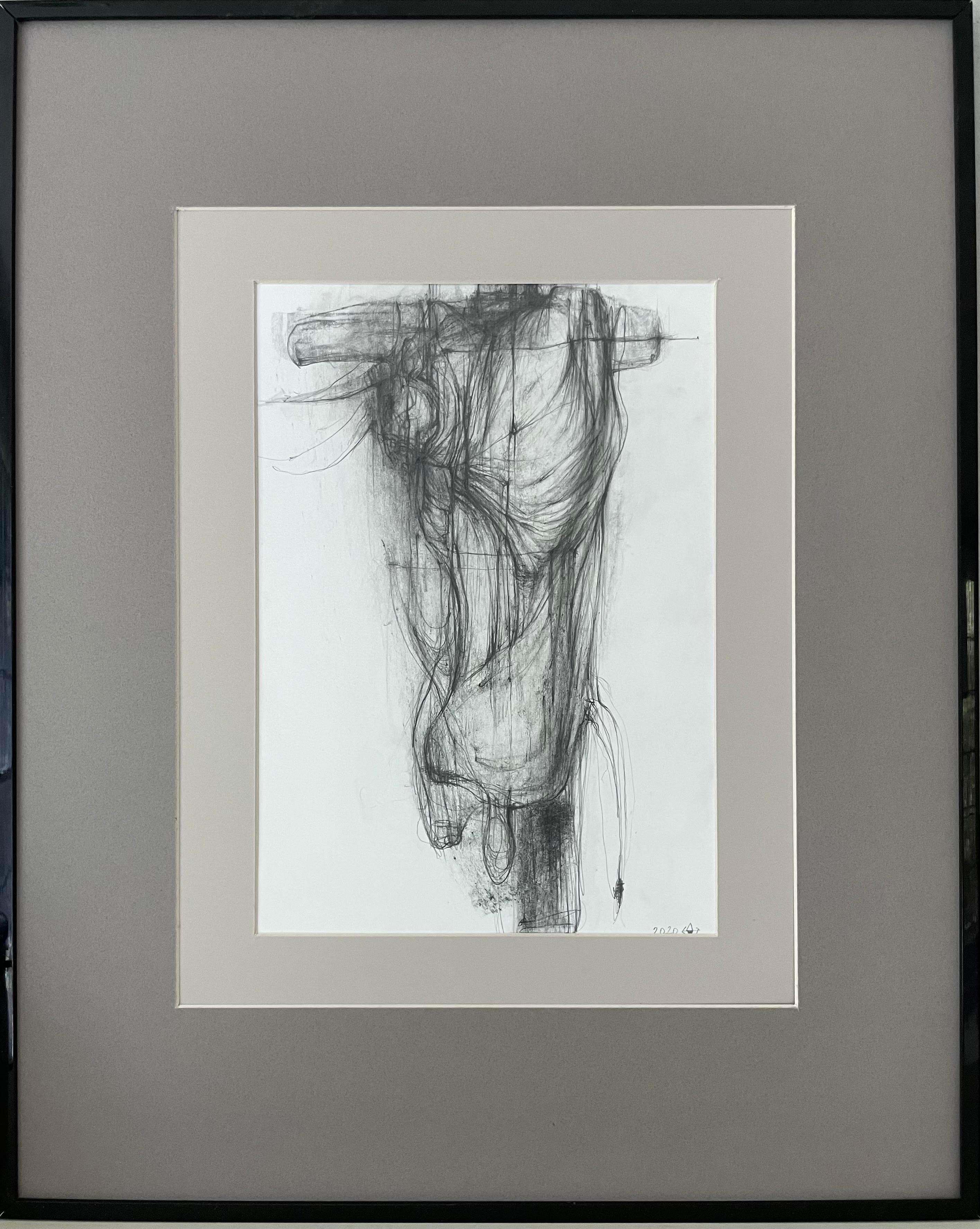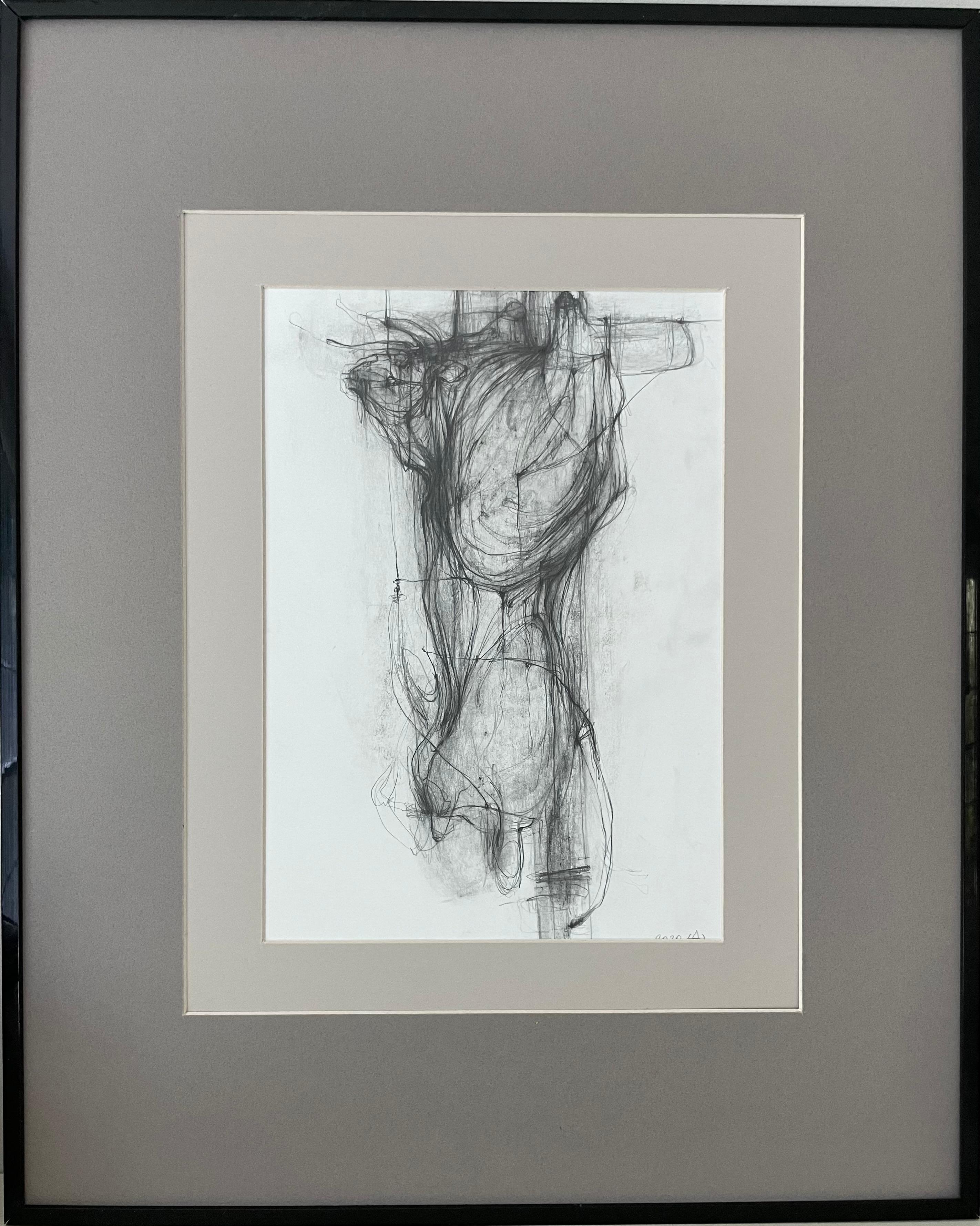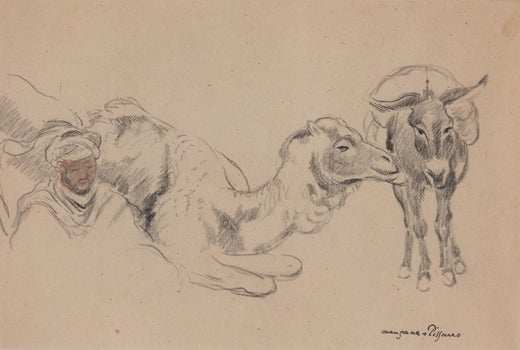Georges Henri Manzana PissarroJeune Femme de Dos au Zèbre by Georges Manzana Pissarro - Nude drawingcirca 1915
circa 1915
About the Item
- Creator:Georges Henri Manzana Pissarro (French)
- Creation Year:circa 1915
- Dimensions:Height: 25.99 in (66 cm)Width: 19.3 in (49 cm)
- Medium:
- Movement & Style:
- Period:
- Condition:
- Gallery Location:London, GB
- Reference Number:1stDibs: LU261210600852
Georges Henri Manzana Pissarro
Georges-Henri Pissarro, better known as Manzana, was born in Louveciennes, the third of Camille Pissarro and Julie Vellay’s seven children.
He studied with his father from a very early age and, like Lucien — Camille and Julie's eldest son — he spent his formative years surrounded by distinguished artists of the Impressionist movement, such as Monet, Cézanne, Renoir and Gauguin, all of whom frequented the Pissarro home. At his father's side he learned not only to handle brush and pencil but also to observe and to love nature.
Thus steeped in tradition and subjected to these diverse influences, Manzana turned out to be a prolific and versatile artist, producing work in oil, pastel and watercolour. As a young man he adopted his father's purely Impressionist style and produced a series of landscapes around Pontoise and Eragny. However, around 1906 he progressed beyond that and went in search of other means of expression via the design of furniture and decorative objects. The influence of Gauguin's exotic native scenes from Tahiti and Martinique certainly contributed to the development of Manzana's Orientalism, which at this time began to manifest itself in some of his paintings by his experimenting with gold, silver and copper paint.
Like all the second generation Pissarro artists, Georges initially worked under an assumed name. In 1894 he adopted "Manzana,” the family name of his maternal grandmother, and it was not until 1910, out of respect to his then-deceased father, that he employed his own family name when signing his work.
During the early 1900s Manzana regularly exhibited Impressionist works at the Salon d'Automne and the Salon des Indépendants, as well as Durand Ruel and Druet in Paris. In 1907 he had his first exhibition of decorative works at Vollard, but it was in 1914 that he had the most important exhibition of his career at the Musée des Arts Décoratifs, where he exhibited 311 works including tapestries, carpets, furniture, glassware, decorative paintings, etchings and lithographs.
Manzana continued to exhibit his work regularly until the late 1930s, splitting his time between Les Andelys and Paris, although spending several summers at Pont Aven in Brittany, where the local costume and lifestyle inspired a series of paintings in the 1930s. At the declaration of war in 1939, he moved with his family to Casablanca, where he stayed until 1947.
Manzana was married and widowed three times. He spent the last years of his life with Félix, his youngest son who was also an accomplished artist, in Menton, returning to the Impressionist tradition and painting the local landscape.
(Biography provided by Stern Pissarro Gallery)
- ShippingRetrieving quote...Ships From: London, United Kingdom
- Return PolicyA return for this item may be initiated within 7 days of delivery.
- Le Petit Cheval by Georges Manzana Pissarro - Animal charcoal drawingBy Georges Henri Manzana PissarroLocated in London, GBSOLD UNFRAMED Le Petit Cheval by Georges Manzana Pissarro Charcoal and gold on paper 31 x 31 cm (12 ¼ x 12 ¼ inches) Signed lower right, Manzana Pissarro Executed circa 1920 Proven...Category
1920s Post-Impressionist Animal Drawings and Watercolors
MaterialsGold
- Nu Assise by Ludovic-Rodo Pissarro - Nude drawingBy Ludovic-Rodo PissarroLocated in London, GBNu Assise by Ludovic-Rodo Pissarro (1878-1952) Charcoal on paper 31.3 x 24.2 cm (12 ⅜ x 9 ½ inches) Signed lower right, L.Rodo This work of art is accompanied by a certificate of authenticity signed and dated by Lélia Pissarro. Artist biography: Ludovic-Rodolphe Pissarro, born in Paris in 1878, was Camille Pissarro’s fourth son. Encouraged by his father, he began drawing from nature at an early age. He was familiarly known as “Rodo” and generally signed his works "Ludovic-Rodo", or early on in his career simply "Rodo". The impact of Camille’s art and teaching on Rodo was considerable. His artistic production encompassed a wide range of media, including oil painting, tempera, watercolour, gouache, wood engraving, drawing and lithography. Rodo exhibited regularly at the Salon des Indépendants over a forty-year period. In 1894, at the age of sixteen, Rodo published his first wood engravings in the anarchist journal, Le Père Peinard. When Camille left France for the safety of Belgium during the anarchist upheavals of the same year, Rodo joined him there. Rodo moved into his first studio in Montmartre with his brother Georges in 1898. Works of this early important period until just after the death of his father in 1903 were post-impressionist and clearly painted under the influence of his father. By 1904 living in Paris, he found the nightlife and the habitués of the cafes, theatres, circuses and cabarets compelling subjects for his work and changed dramatically the style of his painting, affiliating himself to the Fauve artists. Rodo became close to artists such as Kees Van Dongen, Maurice de Vlaminck and Raoul Dufy. In 1905 he participated in the first Fauve exhibition at the Salon des Indépendants. In 1907 he visited Van Dongen in Rotterdam and the two artists continued to paint together, something they often did in Paris. In 1914 he married, though he never had children. Later that year at the outbreak of the War Rodo moved to England. Over the next seven years he lived mainly in and around West London. He worked closely with his brother Lucien to establish in 1915 the Monarro Group, formed with the aim of exhibiting work by contemporary artists inspired by Impressionism. Many of the works produced by Rodo while he was in England were of London landmarks but, he was also interested in the urbanisation of West London. After 1921, when Rodo had already returned to France, he divided his time between Paris and Les Andelys in Normandy, living and working closely with his elder brother Georges Manzana. Despite his rich artistic heritage and his achievements as an artist, Rodo is perhaps best remembered for his contribution to art history. For ten years he researched and compiled a catalogue of his father’s paintings...Category
Early 1900s Post-Impressionist Figurative Drawings and Watercolors
MaterialsPaper, Charcoal
- Etude de Chiens by Paulémile Pissarro - Ink on paperLocated in London, GBSOLD UNFRAMED *UK BUYERS WILL PAY AN ADDITIONAL 20% VAT ON TOP OF THE ABOVE PRICE Etude de Chiens by Paulémile Pissarro (1884 - 1972) Ink on paper 23 x 31 cm (9 x 12 ¹/₄ inches) S...Category
Mid-20th Century Post-Impressionist Animal Drawings and Watercolors
MaterialsInk, Paper
- Etude de Poules by Paulémile Pissarro - Ink on paperLocated in London, GBSOLD UNFRAMED *UK BUYERS WILL PAY AN ADDITIONAL 20% VAT ON TOP OF THE ABOVE PRICE Etude de Poules by Paulémile Pissarro (1884 - 1972) Ink on paper 23 x 31 cm (9" x 12 ¹/₄ inches) ...Category
20th Century Post-Impressionist Animal Drawings and Watercolors
MaterialsInk, Paper
- A Study of Human Head and Tiger by Orovida Pissarro - SketchBy Orovida PissarroLocated in London, GB*UK BUYERS WILL PAY AN ADDITIONAL 20% VAT ON TOP OF THE ABOVE PRICE A Study of Human Head and Tiger by Orovida Pissarro (1893-1968) Pencil on paper 25.5 x 20 cm (10 x 7⁷/₈ inches) E...Category
1910s Post-Impressionist Animal Drawings and Watercolors
MaterialsPaper, Pencil
- Moroccan Dancer by Georges Manzana Pissarro - Nude drawingBy Georges Henri Manzana PissarroLocated in London, GB*UK BUYERS WILL PAY AN ADDITIONAL 20% VAT ON TOP OF THE ABOVE PRICE Moroccan Dancer by Georges Manzana Pissarro (1871-1961) Watercolour, coloured crayon and pencil 26.3 x 20.2 cm ( ...Category
1940s Post-Impressionist Figurative Drawings and Watercolors
MaterialsPaper, Crayon, Watercolor, Pencil
- Disegno figurativo fregio china su carta ripreso dall'antico, XIX secolo.Located in Florence, ITIl disegno, china su carta, rientra negli studi all'antico molto diffusi nelle Accademie dal XVIII secolo in poi, e rimanda al fregio di un sarcofago antico. Al centro si trova un cl...Category
19th Century Old Masters Nude Drawings and Watercolors
MaterialsIndia Ink, Paper
- Art Deco Prancing Horse with Female NudeBy Boris Lovet-LorskiLocated in Miami, FLFamed Art Deco Sculptor Boris Lovet-Lorski depicts his signature "Stallion." in this stunningly elegant drawing. It features a nude female that is compositionally and spiritually in...Category
1930s Art Deco Animal Drawings and Watercolors
MaterialsCrayon, Paper
- EuropaBy Barnaby FitzgeraldLocated in Dallas, TXA Professor of painting at Southern Methodist University in Dallas since 1984, Barnaby Fitzgerald spent his childhood in Italy before receiving a Ma...Category
1990s Contemporary Nude Drawings and Watercolors
MaterialsPaper, Ink, Watercolor
- The Bull III - expressive line drawingBy Dmitrii DrugakovLocated in Fort Lee, NJThe Bull III - expressive line drawing on 140lb paper. The work is size 12x8 inches framed (black) with a styrene face on a double mat board in grey-beige or white-beige color with s...Category
2010s Contemporary Animal Drawings and Watercolors
MaterialsPaper, Graphite
- The Bull V - expressive line drawingBy Dmitrii DrugakovLocated in Fort Lee, NJThe Bull V - expressive line drawing on 140lb paper. The work is size 12x8 inches framed (black) with a styrene face on a double mat board in grey-beige or white-beige color with siz...Category
2010s Contemporary Animal Drawings and Watercolors
MaterialsPaper, Graphite
- The Bull II- expressive line drawingBy Dmitrii DrugakovLocated in Fort Lee, NJThe Bull II - expressive line drawing on 140lb paper. Part of the triptych. His artistic style is rather difficult to describe, it can be named as "expressive romanticism". Usually,...Category
2010s Contemporary Animal Drawings and Watercolors
MaterialsPaper, Graphite

